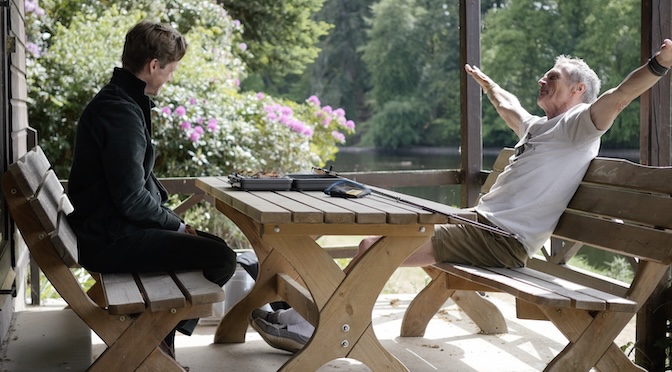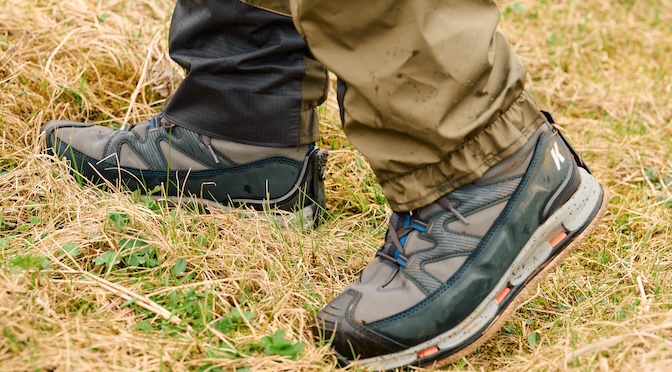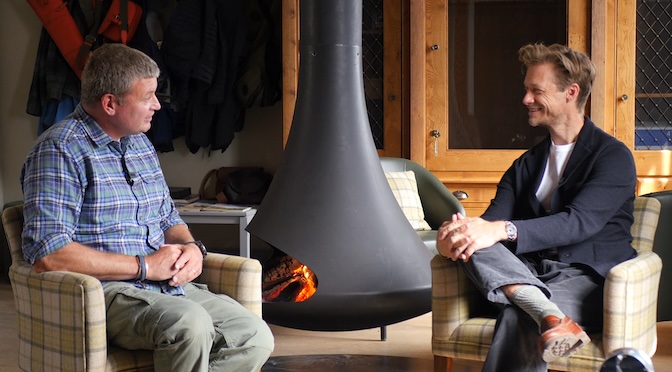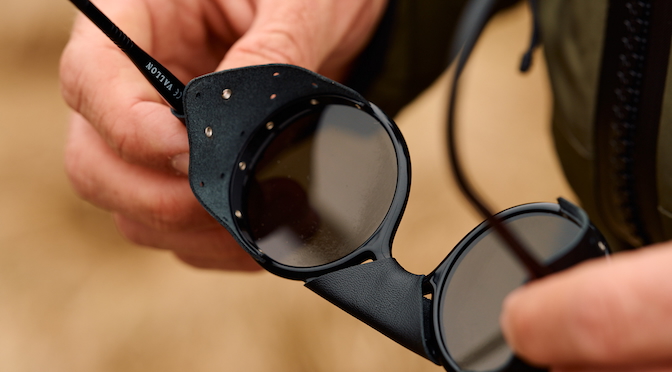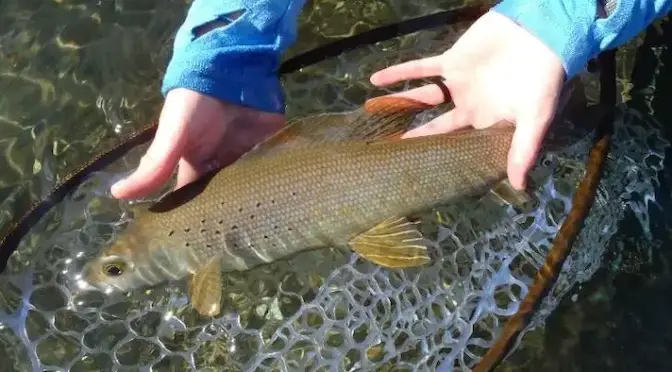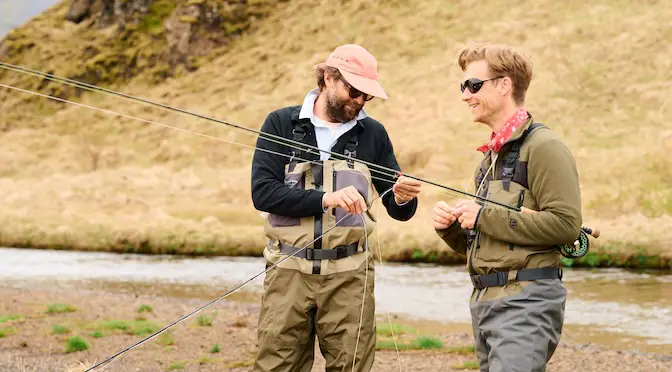Last updated on January 10th, 2024.
- Wading Wisdom #13 – Simon Gawesworth - July 7, 2025
- On the Water with the Korkers Bantam Lite - June 26, 2025
- How to Find Trout in Rivers & Streams Anywhere - June 13, 2025
No other name is as closely connected to the conservation of Atlantic Salmon as Orri Vigfusson.
After his passing last year, the North Atlantic Salmon Fund and its partners continue his legacy. The Salmon Summit 2018 in Reykjavik which will be held on March 21 and 22. We talked to Fridleifur Gudmundsson, chairman of NASF Iceland about the goals of the summit, the situation of the Atlantic Salmon and Orri Vigfusson’s legacy.
What is the idea behind the salmon summit, Fridleifur?
The Salmon Summit 2018 (SS18) is being organized by NASF International, the Conservation Fund, the newly established Orri Fund, the Atlantic Salmon Federation and the Grassy Creek foundation. It brings together individuals, scientists and conservation groups on both sides of the Atlantic that have been active in salmon conservation for years. The purpose is to unite people from across the North Atlantic basin with different backgrounds, to get them in a room together to discuss the condition of salmon stocks and what measures they are taking to tackle various challenges salmon face. Salmon stocks are up against various problems on all fronts, both in the sea and in rivers. We all have the same goal and feel that it is important to work closely with people fighting similar battles, on different fronts and in different areas of the Atlantic. SS18 is precisely the place for that.
How did the salmon summit come into being?
The passing of Orri Vigfusson, founder, leader and chairman of NASF International, on 1st of July 2017, left a huge gap in international North Atlantic salmon conservation. Orri was a unique human being who devoted his life to salmon conservation. He had an extensive network of conservationists, scientists, politicians and supporters all over the world. Orri also worked alone, acting as a hub of sorts. We who worked closest with him have been trying to map his network and connect with NASF supporters he worked with in the past. A lot of these groups have been invited to SS18, to move forward and continue the good work Orri led for the past 27 years. There are many NASF chapters that have now united and will continue Orri´s work into the future. A newly formed NASF Steering Committee has taken over NASF International. The NASF Steering Committee consists of chairmen from NASF chapters from both sides of the Atlantic. The committee will meet a few times a year and decide which projects to focus on. SS18 is part of this process.
What is the current situation of the Atlantic salmon like?
There has been a drastic reduction in Atlantic salmon populations during the last decades on both sides of the North Atlantic Ocean. Catches have more than halved since the 1990´s, so it is clear that the decline is happening fast. A range of factors could be at play, but we believe a majority is due to human impact.
The first wave of human impact that decimated salmon came in countries like Germany, France, the UK and the US, where heavy pollution and damming destroyed salmon habitat, sometimes completely. The river Rhine once held one of the largest runs of salmon in the world, but this was ruined in the 1800s.
The second wave was after WWII and is often related to the development of hydro power. Rivers in countries like Sweden, Norway, Canada and Russia were heavily impacted. Additional challenges were related to pollution from industry, farming and agriculture. In the 80´s legal frameworks started to improve water quality.
Ocean fishing started in the 1960´s when the feeding grounds of salmon were discovered, and a huge fishery with long lines and drift nets sprung up very quickly. The buyout agreements that NASF led reduced that challenge significantly and continue to protect this critical habitat.
The last decades have seen more mixed patterns of impacts on salmon. Something is happening in the oceans and ocean survival has reduced from up to 20% to as little as 1% (1 of 5 smolts coming back versus 1 in 100). The increased mortality hit southern stocks harder than northern stocks on both sides of the Atlantic. There are many unknown factors, but it is availability for salmon, especially in its first months at sea, which might link to large scale fluctuations or changes in ocean climate and environment. With the growth of aquaculture in many countries, two major new factors have caused additional challenges. First, escapees compromise the genetic uniqueness of each stock. Second, sea lice parasites add to the already very high ocean mortality in areas with many salmon farms. There are more factors that could have an effect such as diseases but there is a lot that we don’t know.
The southern range for Atlantic salmon is in serious trouble for both Northwest and Northeast stocks. In North America it is believed that a 70% reduction has occurred since the mid 1970’s, from nearly two million salmon to about 600,000. For Northeast Atlantic stocks, which were always more abundant because of so many more rivers, the decline has been similar, from about 7 million to less than 3 million salmon.
We are already in serious trouble and there has been a shocking decline in salmon stock everywhere. If this continues we will not have any salmon. My home country Iceland is probably doing best but with increased fish farming and fish not returning back from sea we could be looking at the same problems that our neighbors have been experiencing over the last decades. The problem is real and action needs to be taken. NASF is doing everything in its power to enhance salmon stocks everywhere in the Atlantic.
What are some of the topics being discussed at the summit?
The aim is to talk about everything that concerns North Atlantic salmon conservation. SS18 will be divided into six panels, with time for questions and open discussion after each panel. We also have blocks of time in between panels where people can network and dive further into topics of their choice. The panels are: (1) Science update – latest scientific news and data from Europe and North America focusing on populations, trends and challenges; (2) Dams, coastal buyouts & river-level advocacy – conservationists discuss their success and challenges in habitat restoration and protection efforts, (3) High Seas buyouts – Update from the negotiation team on discussion with Greenland and Faroese fishermen associations; (4) Regulatory update – Recent regulatory action and framework for moving forward, with focus on regulating aquaculture across the North Atlantic Basin and Canada; (5) Aquaculture – the state of development of closed containment systems, the economic case, and looking to the future, (6) Working together, moving forward. – Norway as a model of collaboration between NGO´s.
Who takes part in the summit?
We’ve invited people that we know are active in salmon conservation from different areas and with different backgrounds. We want all voices and opinions to be heard. SS18 represents factual discussion where anybody can express their opinion. We reached out to our network and asked for suggestions of who to invite. Hopefully we reached most of the people that want to take part. There will be attendees representing sustainable industry, scientists, conservations, the public sector etc., both among the speakers and in the audience. If anybody has not been invited and wants to take part, then we urge them to reach out to us by email.
Please email: orrifund@northatlanticsalmonfund.org
How can “ordinary” people/fly fishermen get involved in the project?
NASF welcomes public participation. There is an email list on the NASF webpage open to the public. We are also aiming to be more visible on social media and that will come shortly.
NASF has affiliates in many countries. Those interested in joining the battle can either connect with their local group or reach out to our world-wide organization which will be led by the NASF Steering Committee (please email: nasf@nasf.is). NASF works with anglers, scientists, lawyers, business people, scholars etc. from all over the world and we always need more people to help out in the fight. Many supporters donate their work and help spread the message. NASF aims to inform the public about the problem and to pressure politicians and stakeholders to take measures to enhance the habitat and conditions for the king of fish.
Following Orri’s death, NASF US and the Migratory Salmon Fund (the UK NASF affiliate) also launched the Orri Fund. This is a dedicated fund created with the sole purpose of preserving Orri’s commercial conservation agreements in the Faroe Islands and Greenland, both critical feeding grounds for salmon from North America and Europe. We encourage anyone interested in supporting this effort to visit the NASF website where they can learn more about the Orri Fund and join the cause.
What are some of your goals in conserving the Atlantic salmon in the future?
The goal is to restore the habitat of salmon in the Atlantic to what it was some decades ago. Salmon face challenges wherever they go. Dams, agriculture and development have reduced the habitat extensively. Fish farming has threatened and contaminated the genetics of the stocks and sea lice have killed fish in massive numbers. Fishermen and anglers have killed fish in great numbers both in rivers and at sea. The ocean is being polluted and the planet is warming, which can change the habitat conditions and feeding grounds for the fish. It is estimated that the stocks in the Atlantic have declined around 70% in the last two decades and if this continues there will be no salmon left. We therefore must act now before it is too late, and the public has to be aware of the imminent threats that salmon face.
In what way is Orri`s spirit part of the project?
Orri was the founder and leader of the NASF International. For about two decades he waged his battles on both sides of the Atlantic with remarkable results. I have never met a person like Orri. After his passing in July 2017 we spoke with hundreds of members and supporters that have expressed different stories of how Orri led and assisted conservation projects in various countries. How he managed to get everything done is a riddle in itself. With the establishment of the Orri Fund, NASF now has a funding vehicle that will help with future projects. The funding of NASF is always difficult and donors in Europe, UK, USA and Canada can now communicate with their local affiliates or the Orri Fund in order to support those vehicles.
It is impossible to replace Orri but by uniting his network we can continue his work and allocate support to those who are best suited for each battle. You might say we are trying to find the Orri in all of us.

